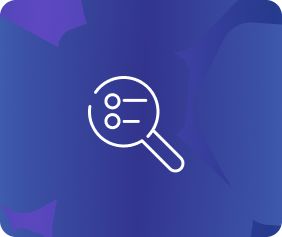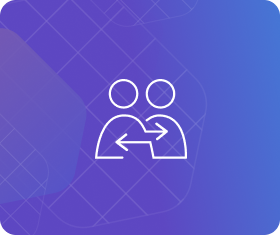How to tackle the challenge

1. Rebuild your demand gen engine around accounts
Traditional demand gen is built around lead capture and volume metrics. But ABM flips that on its head. Instead of casting a wide net, start with a tightly defined target account list—ideally segmented by tier, industry, and buyer role. Then map personas within each account to understand who influences the decision and what matters most to them.
Use intent data, engagement signals, and historical behavior to determine where each account is in its buying journey. This allows you to segment messaging and outreach based on readiness. From there, build campaigns that intentionally activate across those accounts—tailoring delivery by stage, persona, and trigger signals.
Actionable Tip: Set up a dynamic “Engaged Account Tracker” to monitor activity across demand channels—like paid media, webinars, or website visits—and use this to trigger the next best action (e.g., SDR outreach, new nurture stream, or direct mail touch).
2. Create content designed to convert, not just educate
To build pipeline, you need to go beyond awareness content. Most B2B content fails because it’s too generic, too educational, or misaligned with the account’s priorities. Instead, focus on content that changes mindsets, creates urgency, or builds consensus within the buying group. It is critical to build empathy based insights into your messaging and content strategy. This will help you engage at scale but trigger the emotions of key stakeholders in the buying group.
Develop value-led messaging frameworks based on real account insight: what’s their strategic focus, what are their blockers, who’s driving change internally? Then, turn that into high-converting formats—like industry-specific ROI tools, stakeholder playbooks, or side-by-side competitive comparisons. Make the content modular so it can be adapted for 1:1, 1:few, and 1:many programs.
Actionable Tip: Build a “Conversion Content Hub” specifically for target accounts—hosted on a personalized landing page with role-specific messaging and clear CTAs aligned to the next stage in their journey.


3. Use channels that surround the buying group
It’s no longer enough to rely on a few email nurtures or generic webinars. To drive engagement that turns into pipeline, you need a multi-channel approach that surrounds the entire buying group across digital, physical, and conversational touchpoints. Start by identifying where your key personas spend time and what formats resonate with them.
Deploy highly-targeted programmatic advertising, LinkedIn Sponsored Content, retargeting, and video pre-roll for awareness and familiarity. Support that with direct mail or personalized gifting for higher-touch moments. Use chatbots, email, and SDR outreach for real-time interactions that move the account forward.
Actionable Tip: Create “orchestration waves” that sequence channel touchpoints across 2–3 week sprints. For example: Week 1: video ad → Week 2: custom content + SDR email → Week 3: direct mail or executive invite.
4. Sync demand with sales for seamless progression
One of the biggest drop-offs in pipeline generation happens when marketing and sales operate on different timelines or signals. To avoid this, your demand generation engine must be tightly aligned with sales activity. Start by defining shared engagement and readiness signals—then make sure those are visible to sellers inside their CRM and sales tools.
Coordinate outbound plays with demand campaigns. If an account is showing high intent, sales should have a tailored playbook ready—along with messaging tied to the same content themes marketing is promoting. Sales should follow up fast, personally, and in a way that adds value based on what the account has engaged with.
Actionable Tip: Build “Sales Activation Packs” for each campaign that include talking points, email templates, engagement insights, and next-step recommendations. Align these to intent and funnel stage for smoother progression and higher conversion.

Explore other common challenges

How do I design, deploy and manage ABM across my business?
Align teams, unify data, and streamline tech to deploy ABM/ABX at scale—driving measurable impact with consistent execution and regional flexibility.

How can I accurately measure impact of my ABM program?
Set clear goals, align key stakeholders, and track KPIs across the buyer journey to reveal ABM/ABX performance, ROI, and valuable executive insights.

How can I effectively scale my ABM or ABX program?
Unite strategy, proven workflows, automation, and RevTech to scale ABM/ABX—delivering personalized engagement and driving sustainable growth.

How can I leverage AI into my ABM programs to achieve scale?
Leverage AI-powered insights to target accounts, personalize messaging, and accelerate engagement—driving deeper connections and stronger revenue.

How can I build pipeline using demand gen into my targeted accounts?
Use demand gen, intent signals, and buying group data to build awareness, fuel pipeline momentum, and accelerate revenue progression.


